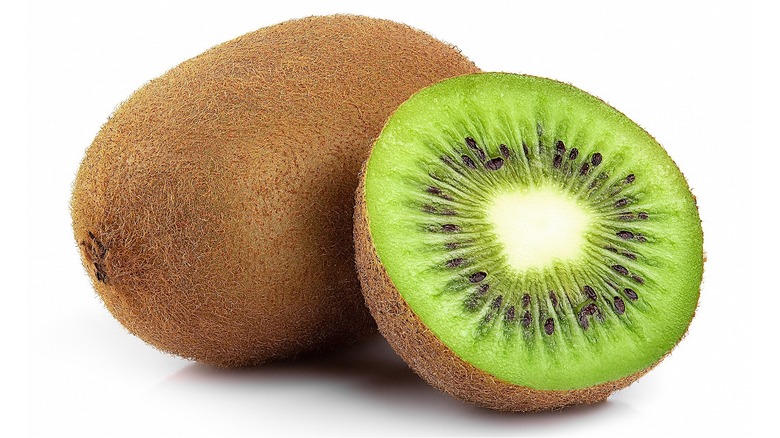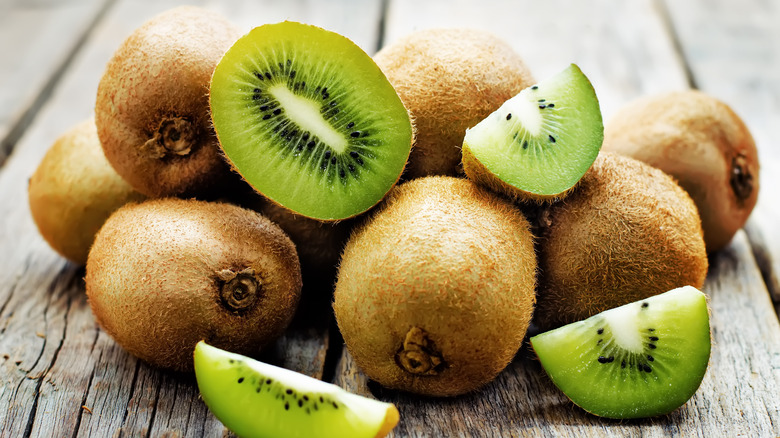Think Twice Before You Peel Your Next Kiwi
Kiwifruit, commonly shortened to simply kiwi, are small, round berries that add a bright pop of color and flavor to any dish they are used in. From salads to jams, jellies and drinks to sweet and savory entrées, kiwis are a favorite ingredient of many — and for good reasons too. The long and short: Kiwis are nutrient powerhouses. A kiwi's vivid green, black seed-speckled flesh is packed with various antioxidants, vitamins, fiber and iron, according to WebMD. Healthline also explains that kiwis can help improve your heart health and support the digestive system.
But as it turns out, the viridescent flesh of a kiwi usually gets all the love. However, many people may not realize that the fruit's iconic fuzzy brown skin is also entirely edible — and unbelievably good for you. So, before you peel off the kiwi's skin and toss it in the compost, it may be a smart move to learn its real benefits.
Kiwi's skin is chock full of goodness
The soft skin of kiwis may look odd or even intimidating, but it's completely safe to eat. According to registered dietician and culinary instructor Jackie Newgent, kiwi's skin is an excellent source of fiber, containing about triple that of its flesh (via Everyday Health). MedicineNet shares that, when you consume the kiwi's skin, you are actually getting up to 50% more of the fruit's benefits as opposed to eating the succulent pulp and tiny seeds alone.
So, what does kiwi's fairly hairy skin even taste like? Its flavor is often described as tart, tangy, and slightly bitter, especially when compared to the sweet green or golden flesh. And as far as texture goes, kiwi's skin has the semi-firm pliability of an apple's, per Restaurant Clicks. Regardless of how you like your kiwis — peeled or unpeeled — remember that keeping their cute brown jackets on definitely has its perks.

